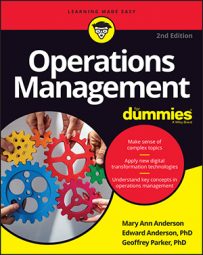How you manage your operations may not seem important from a customer perspective, but nothing could be further from the truth. From a customer’s perspective, two theories are in play: how long the customer waits in line and how long the customer thinks he’s waiting in line.
If you must make a customer wait, you can make the time more comfortable and seem shorter than it really is by managing the customer’s perception of the waiting time. Here are some things to know about managing customer perceptions so the wait doesn’t negatively affect satisfaction:
Customers don’t mind waiting as much if they’re comfortable. This is perhaps the most important way to influence customer satisfaction. Make sure that you have plenty of space, comfy chairs, and a pleasant atmosphere in your waiting room. Offering amenities such as refreshments, current reading material, and wireless Internet can go a long way toward softening the sting of waiting.
Preprocess wait time feels longer than in-process wait time. You want to get your customers into the process as quickly as possible. This may involve something as simple as greeting them the moment they walk in the door. After they enter, they’re less likely to leave before being served.
Unoccupied time feels longer than occupied time. You may want to break up the processing time into smaller steps with a wait between each step rather than having a longer wait time upfront.
Consider a doctor’s office. When you arrive at an appointment, a receptionist greets you and then you wait to be called. Later, a nurse shows you to a room and takes your vital statistics. You then wait again for the doctor. Because the wait is interrupted, people often perceive it as being less.
Uncertain waits are perceived to be worse than certain waits. By telling customers know how long the wait will be, you remove the anxiety associated with waiting. The customers can then relax, knowing when they’ll be served.
Unexplained waits are worse than explained waits. If your customers are going to have to wait longer than expected, let them know. For example, if the doctor is handling an emergency patient, inform the others who are waiting. Customers are more tolerant of these delays. However, if the wait is longer because the doctor took an extended lunch, you probably should avoid sharing this information.
Unfair waits are worse than fair waits. Nothing is worse than feeling that other customers are cutting in line or getting preferential treatment. Having a well-defined process flow can minimize this effect.
These same principles can apply to back orders or customers waiting for build-to-order. For example, providing a website link so the customer can check the order status and a tracking number so the customer can check the shipping progress of the item can make the wait for an ordered item seem to go by faster.

